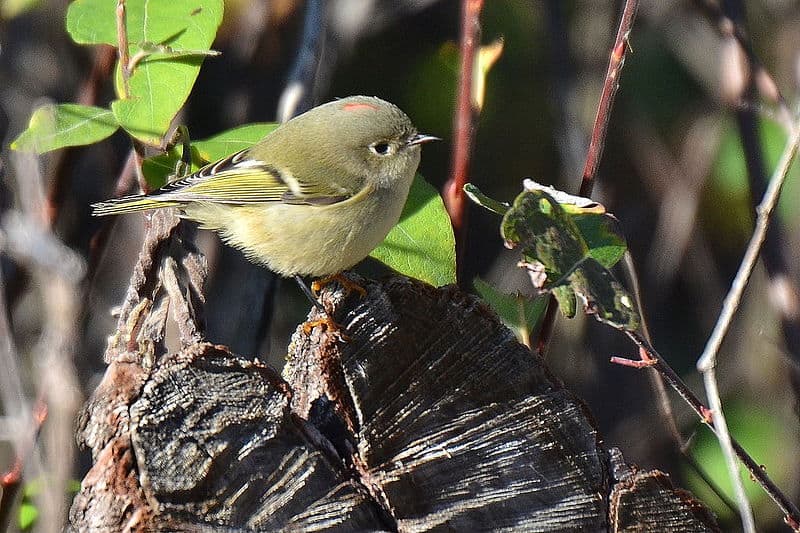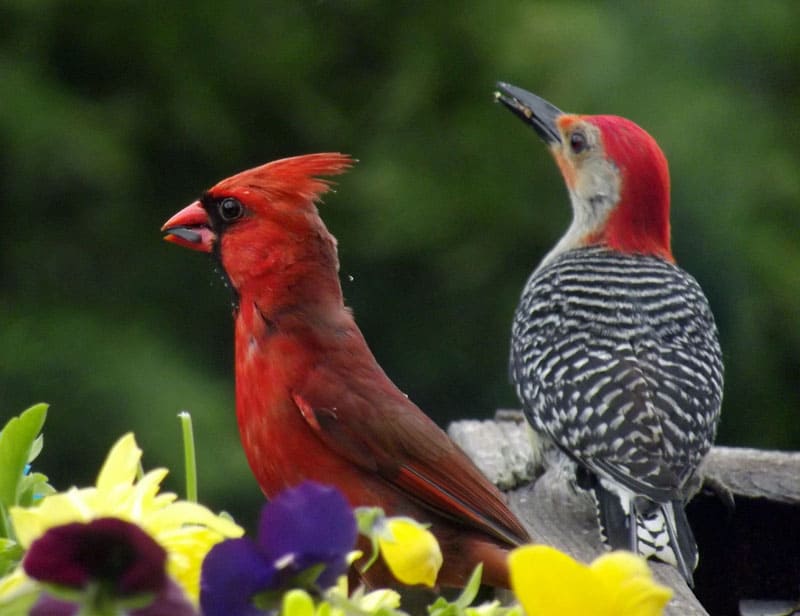Fall Birds of Alabama (September, October, November)
Fall migration is a protracted affair in Alabama, beginning in summer and lasting into winter. Shorebird migration really picks up steam as summer turns into fall. Sod farms and every bit of shallow water become magnets for these birds. A spotting scope is useful during fall.
Warblers tend to migrate southward in large mixed flocks and the fortunate birder that finds himself or herself in the midst of one of these flocks can suffer “warbler neck” as a result. These flocks are most common during September, but they can start in late August and last through October. As noted previously, these flocks tend to be silent or near silent, the only sounds being small notes uttered quietly to keep the flock in touch. Although they do not travel with these flocks, Carolina chickadees and tufted titmice seem to join them as they pass through, and they do tend to be noisy. An important rule for Alabama birders is this: Never disregard a chickadee or titmouse, as they may be the only vocal signal of the presence of many other birds.
These flocks often ride on southward moving weather fronts. Thus, after a fall shower—or even during a light one—venture out with your binoculars and see what rode in. Huge flocks of warblers and vireos may be your reward. Warblers that are uncommon or almost absent during spring migration appear in these flocks, including black-throated green, golden-winged, magnolia, Tennessee, and chestnut-sided warblers throughout the state, and blue-winged and Canada warblers in the mountain and Tennessee Valley regions.
Philadelphia vireos pass through for a month beginning in mid-September, and wintering blue-headed vireos begin showing up a week or so later. Tree swallows winter along the coast, and pass through the state during September and October. Bank swallows are common along the Gulf Coast for six weeks beginning in mid to late August. Ruby-crowned kinglets, common during winter and into spring, begin their arrival in early October, and their golden-crowned cousins lag a couple of weeks behind. Both are fairly common and are quite visible because of their habit of being in constant motion as they forage—flitting about, flicking their wings and tail. Rose-breasted grosbeaks again migrate through in mid-fall.
Fall is an excellent time to see Swainson’s thrush in Alabama. They are not conspicuous, but look for them in quiet woods, usually within 200 yards of moving water. They are curious birds that react well to pishing. They will come relatively close, perch quite still, and study the intruder with a calculating eye.
Raptors are abundant in Alabama in the fall. Broad-winged hawks are especially splendid, as they migrate southward in large flocks. When they reach an updraft created by a hill mass or a thermal created by rising warm air, they will gather in large “kettles” of several dozen birds and spiral upward until they are almost invisible. When they have gained all the altitude the air offers, they begin gliding south, looking for the next source of lift, and saving valuable energy in the process. Because warm, sunny days offer the most lift, they are particularly good for hawk watching.
Sharp-shinned hawks and northern harriers begin arriving in mid September. “Sharpies” are common in the northern third of the state throughout most of September and October. Although they winter in good numbers, many continue across the Gulf, and they become plentiful on the coast for about a month beginning in late September. The harriers remain in Alabama until spring. Harriers are delightful to watch as they hunt in their unique style of low level, slow flight over grassy pastures and this year’s cotton and corn fields.
Cooper’s hawks begin arriving in Alabama just before the beginning of fall and a good number overwinter in the state. They congregate on the coast in October in impressive numbers before migrating across the Gulf. Red-tailed hawks, which breed in Alabama, become abundant in early fall as northern populations look for better winter supplies of food.
Alabama has only a small population of the breeding American kestrel, but by early fall every utility wire seems to have one in residence. They stay until the end of winter, and disappear northward.
Alabama’s other two falcons, merlin and the peregrine falcon, which has made a fabulous comeback, pass through from mid September to the third week of October, and, while a few winter in Alabama, many keep going across the Gulf of Mexico. Peregrine falcons have been observed waiting on offshore gas rigs to ambush smaller birds as they pass by on the their migration to South or Central America, an interesting learned behavior.
Fort Morgan is especially productive for western strays when late September and October fronts moving from northwest to southeast push the wandering birds to the end of land. During and immediately following the passage of such fronts, local birders have encountered many birds seen in Alabama only at Fort Morgan. If you are near the coast and one of these fronts passes through, check Alabama’s Rare Bird Alert or just venture out to Fort Morgan to see what blew in.
Tens of thousands of ducks begin arriving in early fall, beginning with American wigeon, mallard, northern shoveler, northern pintail, green-winged teal, ring-necked duck, and more modest numbers of lesser scaup, and (mostly in the Tennessee Valley Region) American black duck. Common loons begin arriving in mid October in large numbers.




